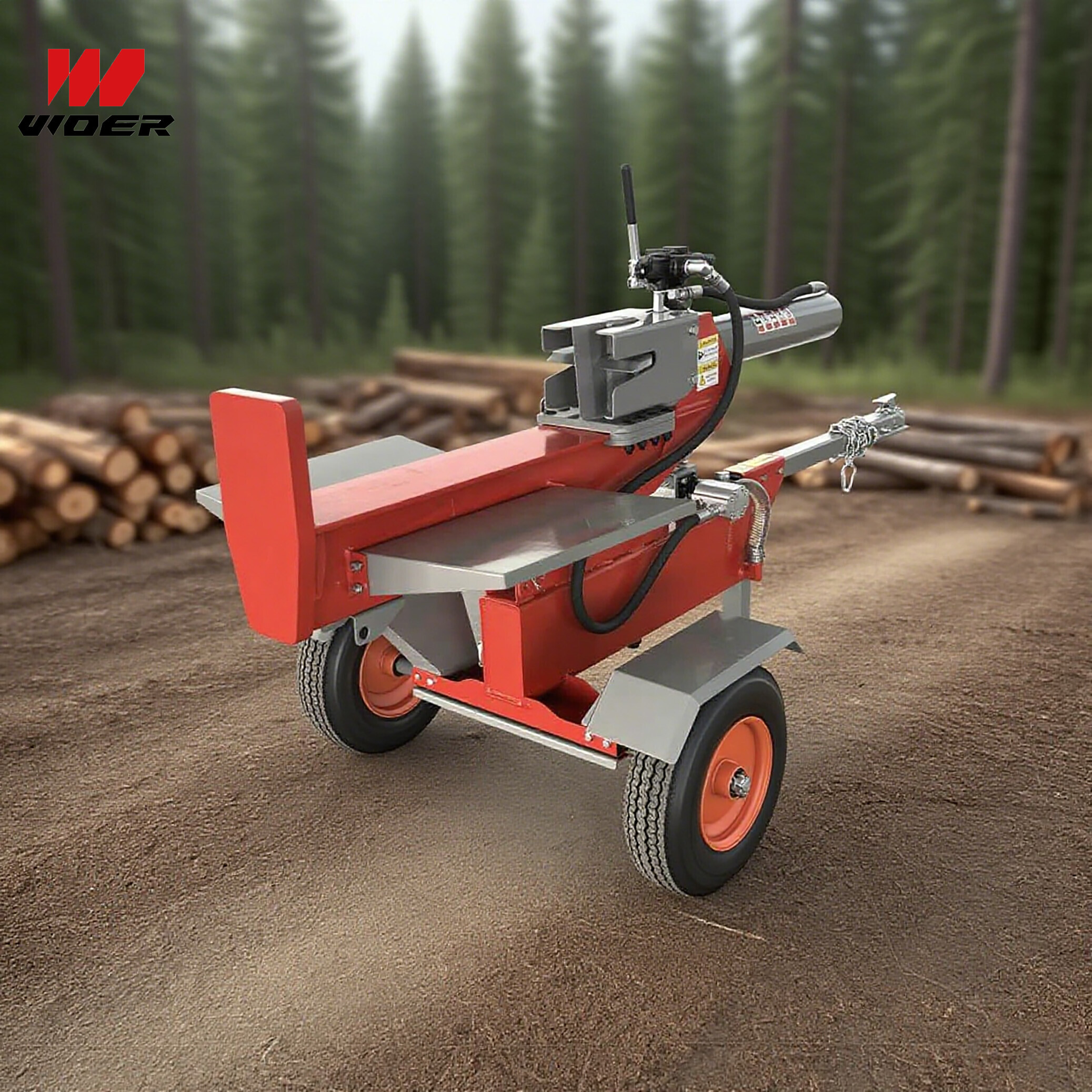Navigation
Contact us
Phone
Message

Understanding the vertical log splitter and core technologies
A vertical log splitter positions the log upright for splitting, which reduces handling and improves operator safety when compared with horizontal machines. Underlying drive systems vary: hydraulic log splitter units offer steady, controllable force; kinetic log splitter designs store and release energy for rapid cycles; electric log splitter and log splitter hydraulic hybrids can reduce onsite emissions; log splitter gasoline models provide mobility and high power for remote sites. Choosing between an electric log splitter, a hydraulic log splitter, a kinetic log splitter, or a log splitter gasoline unit requires matching cycle rate, splitting force, duty cycle, and site constraints.
Key advantages for commercial operations
- Improved throughput: Vertical geometry reduces rehandling time and aligns with automated feeders, increasing processed cubic meters per shift.
- Operator safety and ergonomics: Upright logs minimize stooping and pinch points, enabling compliance with safety programs and lowering injury rates.
- Space and workflow optimization: Vertical machines occupy a smaller floor footprint and integrate well into racking and conveyor systems.
- Versatility across wood types: Whether splitting oak, softwoods, or reclaimed timber, hydraulic and kinetic vertical log splitters deliver high-quality splits with fewer jams.
Technical performance and specification checklist
Technical evaluators should verify the following parameters when assessing a vertical log splitter: maximum splitting force (tonnage), cycle time (seconds), hydraulic pump flow (L/min) if applicable, motor rating for electric log splitter variants, fuel consumption for gasoline models, and cylinder return method. Industry-standard references such as ASTM or EN testing protocols can be used to validate claimed output and safety performance. For example, a 20-ton hydraulic log splitter with a 6-second cycle is typical for light-commercial use; heavy-duty units exceed 30 tons and are specified for larger diameter logs.
Table: Comparative overview of drive types
Operational and safety considerations
Safety is paramount in commercial deployments. A vertical log splitter reduces bending and repetitive strain injuries but introduces vertical pinch hazards; therefore, integrated guards, two-handed controls, emergency stop systems, and compliance with regional machine directives (for example, EN ISO 12100 hazard assessment) are essential. Operators should be trained on log centering, wedge inspection, and avoiding off-center loads that can cause kickback. Maintenance protocols for hydraulic oil, seals, and electric motor cooling will prolong uptime.
Common usage scenarios
- Large-scale firewood processing yards favor hydraulic vertical log splitters with conveyor integration to maximize throughput.
- Commercial landscaping firms often choose a log splitter gasoline configuration to access remote properties where electricity is unavailable.
- Manufacturers of wood billets or biomass clients may adopt kinetic log splitter systems for high-cycle production lines.
Cost, ROI, and procurement guidance
Procurement officers and financial approvers should evaluate total cost of ownership (TCO) not just capital price. TCO includes initial acquisition, installation, energy or fuel, maintenance, consumables (hydraulic oil, filters), operator labor, downtime risk, and residual value. A vertical log splitter that reduces manual handling can deliver measurable labor savings and lower injury-related costs. When assessing a log splitter for sale cheap, ensure warranties, service networks, and spare parts availability are not sacrificed for upfront savings.
Checklist for bidding and specification
- Define required tonnage and maximum log diameter.
- Specify cycle time and continuous duty rating.
- Require compliance statements for applicable standards and CE/UL markings.
- Ask for service response times and local parts inventory.
- Verify mounting and integration requirements for conveyors or loaders.
Maintenance best practices and uptime strategies
Regular inspection of hydraulic hoses, seals, wedge alignment, and motor brushes extends equipment life. For electric log splitter installations, ensure proper ventilation and motor protection to avoid thermal trips. For hydraulic log splitter models, adopt oil sampling to monitor contamination and schedule seal replacements proactively. A planned maintenance contract with defined KPIs (uptime percentage, mean time to repair) helps procurement and operations report predictable availability to stakeholders.
Common misconceptions and usage pitfalls
One frequent misconception is that the cheapest log splitter for sale cheap will maximize ROI. In practice, lower-quality units often have higher downtime and repair costs. Another pitfall is undersizing equipment: a mismatched log splitter gasoline or electric log splitter with insufficient power will reduce throughput and increase labor costs. Finally, neglecting operator training negates the ergonomic gains of a vertical log splitter.
Standards, testing, and quality assurance
Referencing international standards such as EN ISO 12100 for safety, and applying ASTM or JIS protocols for material handling tests, strengthens procurement contracts and verifies manufacturer claims. Request load test certificates and cycle-life data during vendor evaluation. Incorporating factory acceptance tests (FAT) and documented commissioning reduces integration risk.
Case insight: improved commercial throughput with vertical layout
In a European wood-processing facility, replacing horizontal splitters with a vertical log splitter line reduced manual handling time by 30% and increased throughput by 22% through continuous feeding and conveyor integration. This translated into a payback of under 18 months when factoring reduced labor costs and fewer safety incidents. Such real-world data supports EEAT by demonstrating experience-backed outcomes.

This stunning beach house property is a true oasis, nestled in a serene coastal community with direct access to the beach.
Contact
West Street, Melbourne Victoria 3000 Australia